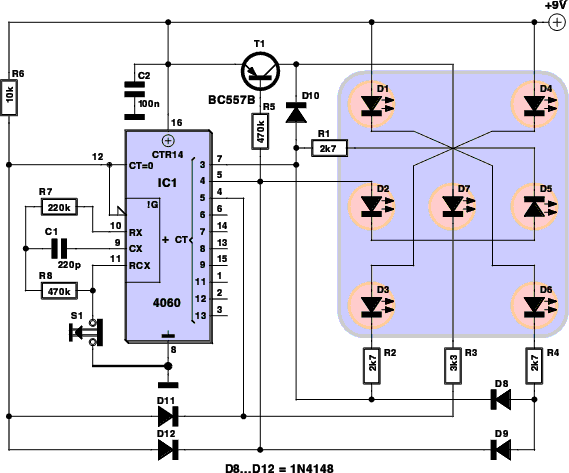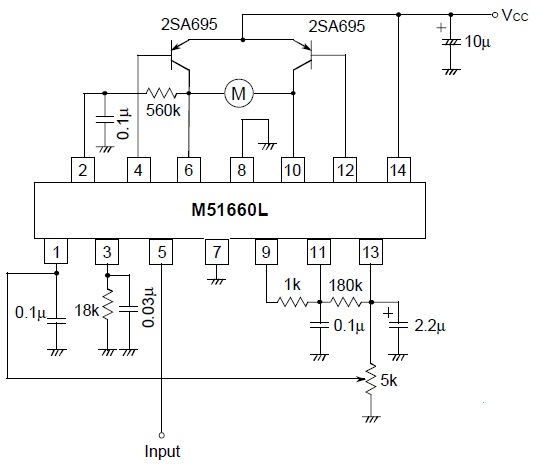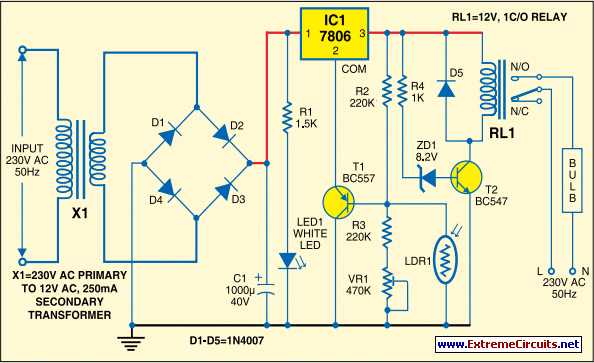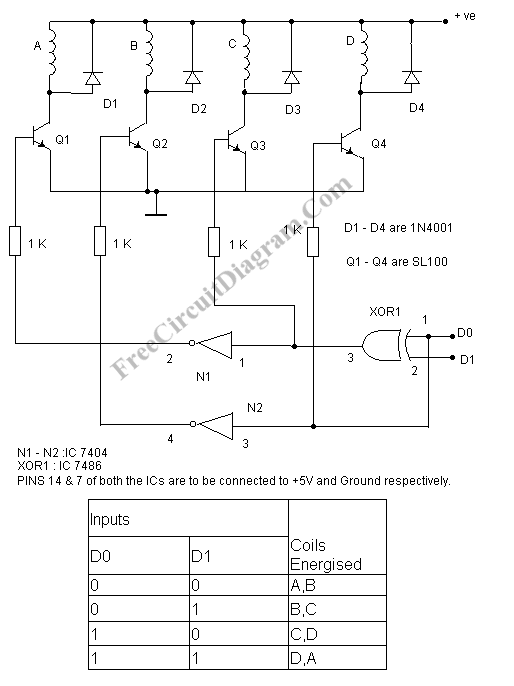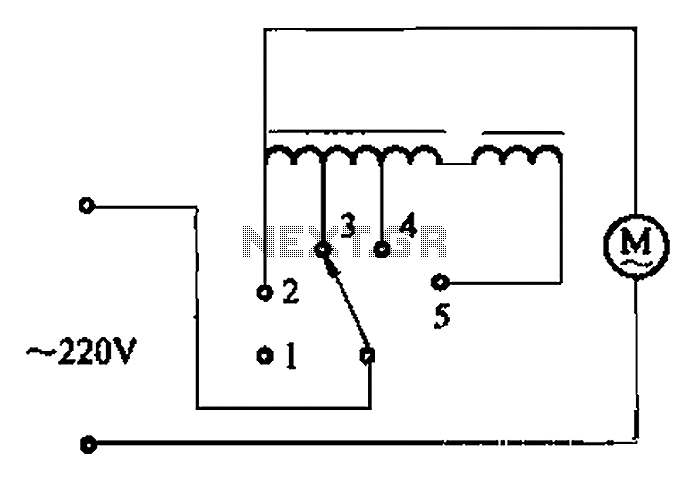
Two inverter controlled synchronous motor of the second circuit
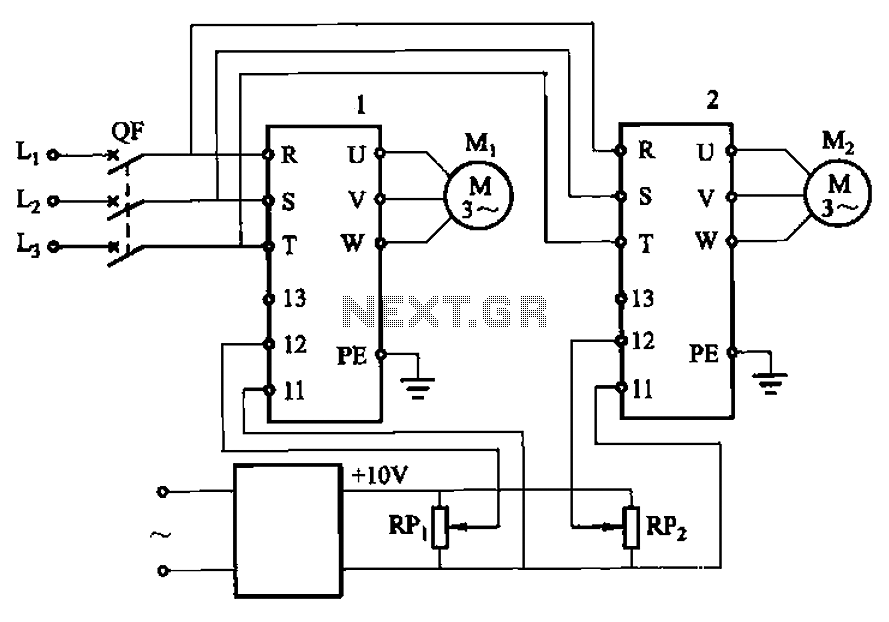
Adjust the potentiometers RPi and RPz to modify the speed of two motors.
The circuit utilizes two potentiometers, designated as RPi and RPz, to control the speed of two separate motors. Each potentiometer is connected in a voltage divider configuration, enabling variable resistance that affects the voltage supplied to the motor drivers.
The motor drivers, which can be either H-bridges or simple transistor-based circuits, receive the adjusted voltage from the potentiometers. As the resistance of RPi and RPz is varied, the output voltage changes accordingly, allowing for precise control over the speed of each motor.
To implement this design, the following components are typically used:
- Two potentiometers (RPi and RPz) with suitable resistance values to ensure effective control over the motor speed.
- Two motor driver circuits capable of handling the current and voltage requirements of the motors.
- Power supply to provide the necessary voltage to the motors and the driver circuits.
- Motors that are compatible with the chosen driver circuit specifications.
Wiring should be done such that the wiper of each potentiometer connects to the input of the respective motor driver, while the other two terminals connect to the power supply and ground. This arrangement allows for smooth and responsive speed adjustments based on the potentiometer settings.
In summary, this circuit design effectively integrates potentiometers for variable motor speed control, providing flexibility and precision in applications requiring adjustable motor performance.Adjust potentiometer RPi and RPz, two motor speed can be changed.
The circuit utilizes two potentiometers, designated as RPi and RPz, to control the speed of two separate motors. Each potentiometer is connected in a voltage divider configuration, enabling variable resistance that affects the voltage supplied to the motor drivers.
The motor drivers, which can be either H-bridges or simple transistor-based circuits, receive the adjusted voltage from the potentiometers. As the resistance of RPi and RPz is varied, the output voltage changes accordingly, allowing for precise control over the speed of each motor.
To implement this design, the following components are typically used:
- Two potentiometers (RPi and RPz) with suitable resistance values to ensure effective control over the motor speed.
- Two motor driver circuits capable of handling the current and voltage requirements of the motors.
- Power supply to provide the necessary voltage to the motors and the driver circuits.
- Motors that are compatible with the chosen driver circuit specifications.
Wiring should be done such that the wiper of each potentiometer connects to the input of the respective motor driver, while the other two terminals connect to the power supply and ground. This arrangement allows for smooth and responsive speed adjustments based on the potentiometer settings.
In summary, this circuit design effectively integrates potentiometers for variable motor speed control, providing flexibility and precision in applications requiring adjustable motor performance.Adjust potentiometer RPi and RPz, two motor speed can be changed.
Warning: include(partials/cookie-banner.php): Failed to open stream: Permission denied in /var/www/html/nextgr/view-circuit.php on line 713
Warning: include(): Failed opening 'partials/cookie-banner.php' for inclusion (include_path='.:/usr/share/php') in /var/www/html/nextgr/view-circuit.php on line 713
